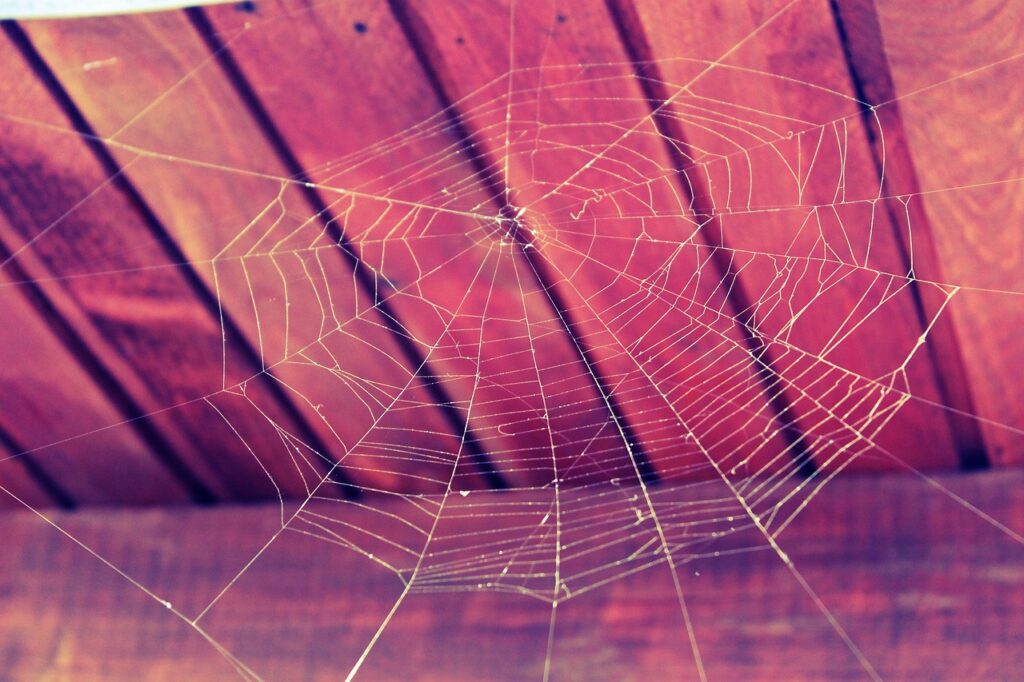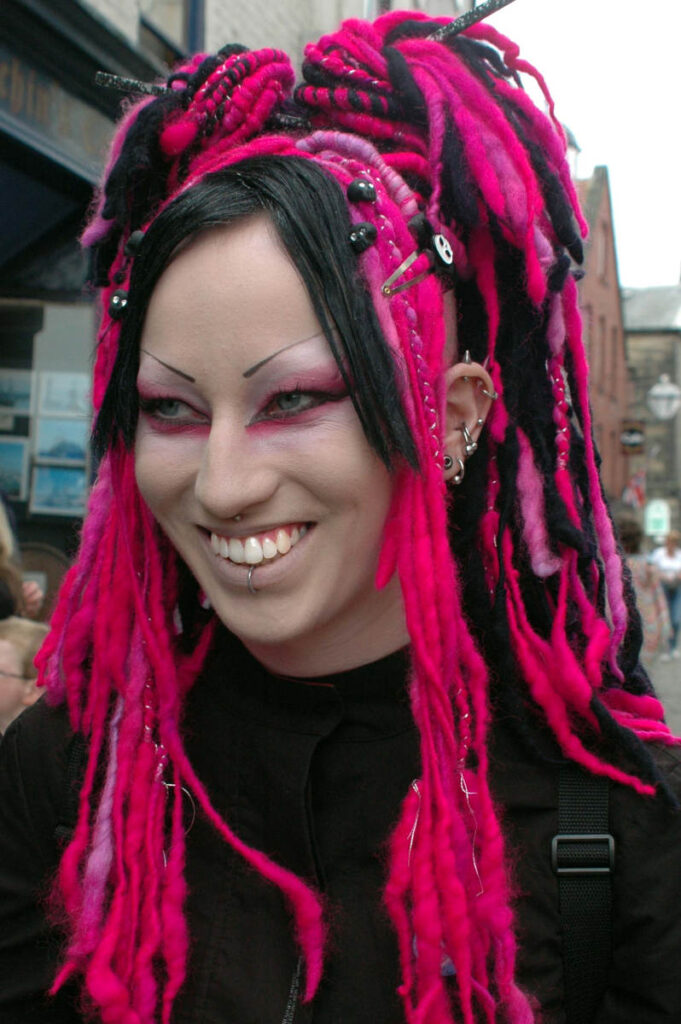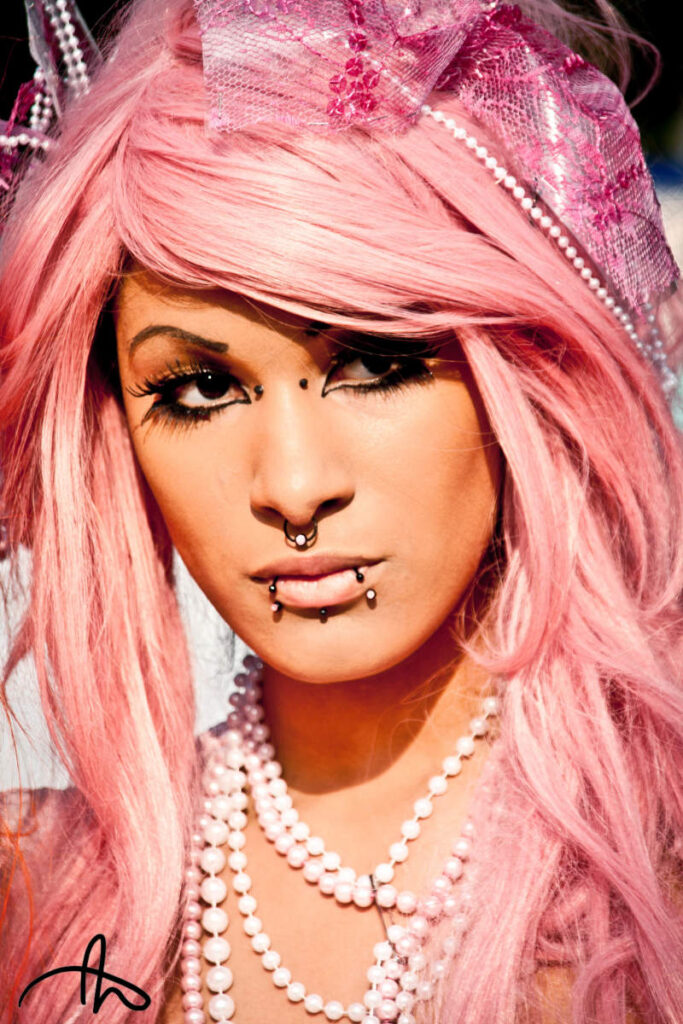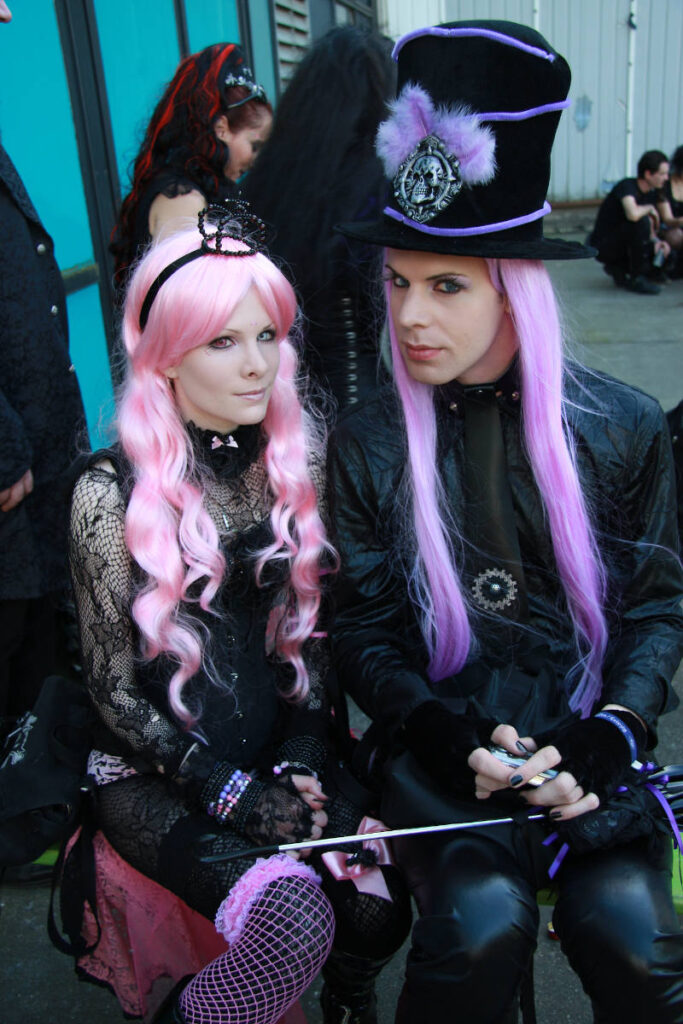December 5, 2022
Pink Gothic: The Cathartic Aesthetics of The Owl House
Academic knowledge that doesn’t attempt to create something new isn’t worth a damn. So, to put my own academic expertise to good use, I coin the term Pink Gothic to refer to the aesthetics of The Owl House – particularly, how “Gothic pinkness” assigns a cathartic quality to these aesthetics.
If you already feel a bit overwhelmed – “too many unknown words!” – worry not. I plan to make this post accessible and interesting. So here’s a simpler way of expressing the same thing as above:
I decided to write a post where, inventing the term “Pink Gothic”, I explore how colors and other visual elements in a narrative are associated with the resolution of fears and anxieties – typically brought to the surface by the very same narrative. In this exploration, I use the animated fantasy series The Owl House as an example.
Indeed, it was the aesthetics of The Owl House that inspired me to reflect on this matter. It’s likely (if not highly likely for my usual readers) that you’re not familiar with The Owl House. Again, worry not. I will offer plenty of examples along the way.

Pink Gothic Characteristics: The Fashion
If you googled “Pink Gothic” you would find plenty of results about goth fashion – pink boots, bodices, pantyhose, etc. – but nothing about narratives and the Gothic mode. That doesn’t mean the dynamics of Pink Gothic are unknown, only (perhaps) that there has not been a systematic exploration of these dynamics.
Intriguingly, however, if we focused on the fashion aspect, we’d likely discover pink goth fashion fans prefer such items for reasons similar to the ones I’m exploring in this post.
That is to say, I suspect the reason pink goth items are attractive is that they combine soft, innocent, hopeful, calming elements (pink colors, furry textures, semi-transparent material) with harsh, aggressive, dark, unstable ones (dark colors, hard surfaces, sharp lines).
A picture is worth a thousand words, they say, so here are three:



Now, the key question to ask is: What is the effect of this juxtaposition?
To properly answer this question, we should examine the aesthetics of The Owl House – if a picture is worth a thousand words, animated pictures must be worth millionsWell, if I wanted to be super-pedantic about it, each episode of The Owl House is worth 30+ million words. Being about 21 minutes or 1260 seconds long, each episode contains 31,500 frames – assuming a frame rate of 25 fps. If each one is worth a thousand words, that makes 31,5 million words.!
Elements of Pink Goth Fashion
However, before I explore the cathartic (and why they are cathartic) aesthetics of The Owl House, here’s a handy list – a recap of sorts – containing the key characteristics of Pink Gothic in the fashion sense we saw right above. This will later help us come up with a similar list for narrative purposes.
- Pink Gothic fashion contains plenty of soft, pastel colors – predominantly hues of light red, violet, and pink.
- These must be juxtaposed to darker hues, mostly black, though dark blue, or drab gray and brown are also possible.
- Similarly, fuzzy and transparent textures are juxtaposed to harsh, metallic, sharp-lined ones.
- Ultimately, the underlying concepts to consider are juxtaposition and duality.
With this in mind, let’s now explore why I consider the aesthetics of The Owl House an example of Pink Gothic and why this assigns cathartic elements to the narrative.
Aesthetics of The Owl House: Pink Gothic Markers
Before we continue, here’s a 30-second video – it’s the end titles sequence – that will help you see how The Owl House looks like, if you’re not familiar with the series:
There are three visual elements worth noticing here:
- The color palette contains many of the elements we saw above, when talking about pink goth fashion. That is, we have plenty of pastel hues of red, from pink and violet to orange and mauve. Importantly, these are juxtaposed to drab and gray colors.
- There is intelligent use of depth: elements with increased blurriness which, as importantly, still contain plenty of detail – we could even say texture, to echo the comments on fashion in the previous section. In a sense, that’s another juxtaposition.
- Another juxtaposition is that between soft curves and harsh, angled shapes.
- There is little use of empty space. In other words, though from a purely practical perspective it would’ve likely been easier to include plenty of empty space (e.g. long vistas, extended skies), The Owl House aesthetics focus on enclosure.
Perhaps at this point it would also be fruitful to offer a brief synopsis of The Owl House, in case you know nothing about it. I’m quoting from Wikipedia:
The series centers on Luz Noceda, a teenage Dominican-American human girl who accidentally stumbles upon a portal to the Demon Realm, where she arrives at the Boiling Isles, an archipelago formed from the remains of a dead titan, and befriends the rebellious witch Eda Clawthorne, also known as “The Owl Lady”, and her adorable demon housemate King. Despite not having magical abilities, Luz pursues her dream of becoming a witch by serving as Eda’s apprentice at the Owl House and ultimately finds a new family in an unlikely setting.
Gothic Markers in The Owl House
Strictly speaking, The Owl House isn’t among the purest expressions of the Gothic mode. The chief reason is that it doesn’t display the ontological ambiguity required: There is magic, there are monsters, deal with it. Nonetheless, considering the scope of the series, we can certainly include it in the wider Gothic sphere, based on a variety of markers:
- Despite the YA nature of the narrative, there are important issues pertaining to identity, ethics, and the nature of reality that The Owl House explores.
- The repressed past, transgression, revolt against authority (patriarchy?), charged family dynamics, are some very obvious Gothic elements that are also present in The Owl House.
- Obviously, the concept of the grotesque and monstrosity in general are central to the narrative. Crucially, this is not on a superficial level – “a story with monsters” – but it informs the character dynamics of the work. In other words, there are clear references to identity, one’s place in the world, and otherness in general. There is intricate symbolism in The Owl House, perhaps only subconsciously so, and therefore – in typical Gothic fashionContemporary critics of Bram Stoker’s Dracula mentioned a feeling of transgression reading the book, saying they weren’t sure what was the source, yet adding that they weren’t sure Stoker was sure, either. – partly unwritten. In a sense, “the owls are not what they seem”.
- There are numerous Gothic spaces in The Owl House, with all the associated liminal realities involved. That is to say, spaces in The Owl House delineate ambiguous thresholds between, for instance, submission and independence, aggression and empathy, knowledge and wilful ignorance. More crucially – and here we could return to the aesthetics of The Owl House – these spaces often convey a carefully constructed aura of enclosure, mild claustrophobia, and even entombment.
Remember the element of empty spaces (or lack thereof) I mentioned above? By filling every possible corner of the screen with objects, The Owl House creators subtly underline the (apparently) finite, hard limits of this world and this reality.
Empty Space and Depth of Field
Of course, in turn, this boosts the affective power of the few open spaces when they do appear. Watch again the video linked above, and notice at 0:23 the effect of seeing the sea (followed by the upward pan, toward the sky). What do you feel then?
This is further enhanced by the skillful use of depth – the way objects outside the depth of field of the (hypothetical) camera lens are blurred. Not only does this obviously construct reality, as it’s predicated on a “real-world” cinematographic aspect, but more importantly for the purpose of defining the aesthetics of The Owl House, it subtly highlights the claustrophobic aspect I described above, as it assigns a sense of movement. The viewer, the intended audience, feels a desire to move beyond the narrow confines of the scene, due to the sense of “something beyond”.
With this in mind, let’s now talk about juxtaposition and duality, to see how it’s all combined to assign the aesthetics of The Owl House a cathartic essence.
Aesthetics of the Owl House: Duality and Catharsis
Before I continue, it might be fruitful to remind you one key characteristic of the Gothic in general: It’s about expressing the inexpressible. The Gothic mode first and foremost operates on a subconscious level: It retrieves a repressed memory, it (indirectly) asks some fairly uncomfortable questions, and (indirectly) forces us to face our deeper fears and existential anxieties, achieving catharsis.
The key difference between Pink Gothic and what I just described above is, I argue, that Pink Gothic offers a visualistic expression of this catharsis.
In simpler words: Pink Gothic, by means of its aesthetics, makes the duality of fear and resolution more explicit; it literally paints the picture of how catharsis will look (and feel) like.
In the context of the aesthetics of The Owl House, the end title video above is telling. Luz, after walking through several settings – some positive, others menacing (notice the drab colors between 0:10-0:12) – eventually reaches Eda and the Owl House, she reaches home, and it’s certainly not an accident that the Owl HouseThe Owl House is a typical Gothic space: Liminal and ambiguous, it is a bridge between worlds but also between states of mind, both uniting and separating them. is situated on the edge of a cliff, allowing view of the empty space extending to the sunset.
Sublimity in The Owl House
Eda explains this to Luz even more explicitly, early on in the series. Having called the Boiling Isles a basically ugly and rotten place, she offers her a ride on the Owl Staff – her archetypal “broomstick” – and shows her the world from above. There is beauty too, she says, if you look at the Boiling Isles from a more general perspective.
Not only is there a clear metaphor there – hinting at problem-solving and decision-making, as well as the dynamics of aesthetic appreciation (in a truly meta- kind of way) – but it’s important how the concept of the sublime appears in the picture.
Indeed, the idea of representation is central in The Owl House. Not only metaphorically, through issues of identity, but also literally: The Owl House explicitly differentiates between the way we see things and what they are – in fancy academic lingo: between phenomenological and ontological aspects – also commenting on our inability to form a complete representation, which together with contradicting duality (ugly and beautiful, scary and appealing, etc.), is a key feature of the sublime.
Pink Aesthetics in The Owl House: The Effect of an Explicit Catharsis
In lieu of another conclusion, I would like to end this post by wondering aloud on something I consider problematic; a paradox of sorts.
Can catharsis be explicit?
In other words, can we truly resolve repressed memories and subconscious anxiety if this resolution is explicitly offered to us?
I am not sure. I would tend to say “no”, but there are a couple of traps there. The first one revolves around agency: It is obvious that, in order to face our fears, well… we must be the ones to face them. It cannot be done on our behalf. Therefore, my phrasing the question as a resolution “explicitly offered” is a misnomer.
The second fallacy follows from the first and revolves around what exactly is offered. It’s clear, I’d argue, that Pink Gothic doesn’t offer the catharsis itself – how could it, considering it is a subjective concept, both in its resolution and in terms of the anxiety the resolution addresses.
What Pink Gothic offers is a symbol.
In The Owl House, the pink aesthetics aren’t there to wave a magic wand (no pun intended) and take care of the problems of the characters, let alone those of the viewers. They aren’t even there to help us in this quest, but in the most casual, incidental manner.
Rather, the pink aesthetics of The Owl House are a banner; a typically Gothic placeholder symbolizing a catharsis each has to reach on their own (because there is no other way).
If you’re interested in The Owl House, also take a look at my post “‘To Be Understood'”: A Lesson from The Owl House“.


A catharsis is never presented itself because it is a discharge and energies have no appearance, they lend meaning to appearances. That’s why any image could allegorize a catharsis. It just demands we invest ourselves enough in it for it to take effect. This efficacy of images (dis)charging us emotionally lies behind the magic of narrative. Depending on how we narrate, how much space we give to unconscious freedom, narration can be cathartic, a form of curing, a therapy.
I’m also inclined to believe that, as I implied in the post, the process is entirely subjective. In other words, I’m sure we’d have occasions where the same set of images triggers the resolution of the process for certain (many? most?) people, yet brings about the opposite effect for others.
Pair all this with the concept of the uncanny valley, coulrophobia (fear of clowns), and similar responses, and you have a rather unstable mixture.
Frankly, sometimes I wonder how narratives work as expected most of the time!